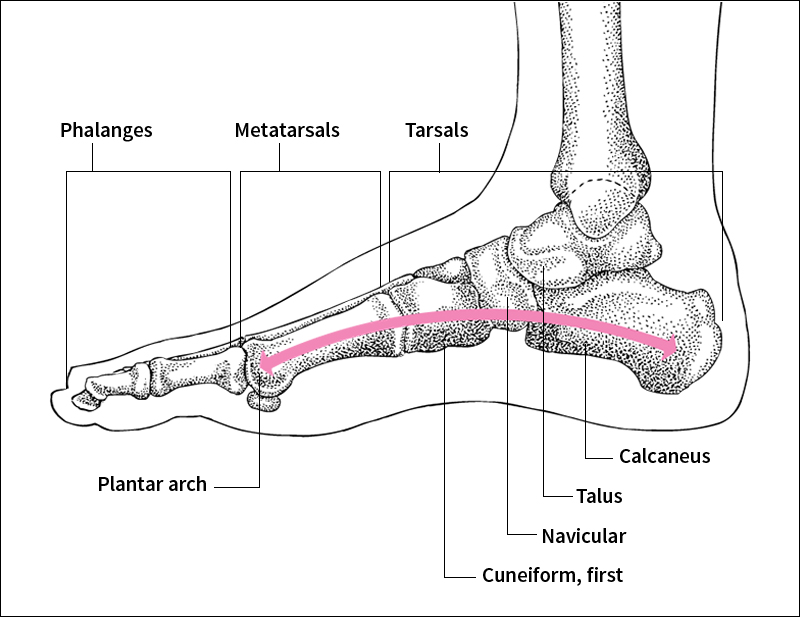Foot is the structure at the end of the leg, on which humans and some animals stand. In animals that walk on all four legs, the ends of the front and hind limbs, or feet, are much the same. In humans, birds, and animals such as the kangaroo that walk on their hind limbs, the foot is heavier and stronger than its counterpart on the forelimb, the hand.
The bones.
The human foot has 26 bones. They are (1) the seven tarsals, or anklebones; (2) the five metatarsals, or instep bones; and (3) the 14 phalanges, or toe bones. The tarsal bones are the talus, calcaneus, navicular, cuboid, and the three cuneiform bones. They form the heel and back part of the instep. The metatarsal bones connect the cuneiforms and the cuboid with the phalanges, and form the front part of the instep. The big toe has two phalanges. Each of the other toes has three. The ends of the phalanges meet the underside of the metatarsals to form the ball of the foot.

The arches.
The bones of the foot form three arches, two running lengthwise and one running across the instep. The arches provide the natural elastic spring of the foot in walking or jumping. The main arch reaches from the heel bone to the ball of the foot. It is called the long medial or plantar arch. This arch touches the ground only at the heel and ball of the foot and thus acts as a shock absorber for the leg and spinal column. A thick layer of flexible cartilage covers the ends of the bones of the arch (see Cartilage). The cartilage helps make the arch shock-absorbent. The lateral arch runs along the outside of the foot, and the transverse or metatarsal arch lies across the ball of the foot. The condition known as flatfoot may be caused by the breakdown of the arches of the foot (see Flatfoot).
Ligaments and muscles
support the arches of the foot. The long plantar ligament, called the plantar fascia, is very strong. It keeps the bones of the foot in place and protects the nerves, muscles, and blood vessels in the hollow of the foot. The foot has as many muscles as the hand. But its structure permits less flexibility and freedom of movement than does that of the hand.
Tough, thick skin covers the sole, or bottom, of the foot. A thick pad of fatty tissue lies between the skin and the bones and the plantar ligament. This layer of fat acts like an air cushion to protect the inner parts of the foot from pressure on the foot and from jarring. Disorders of the foot, such as corns, may result from wearing badly fitted shoes.
